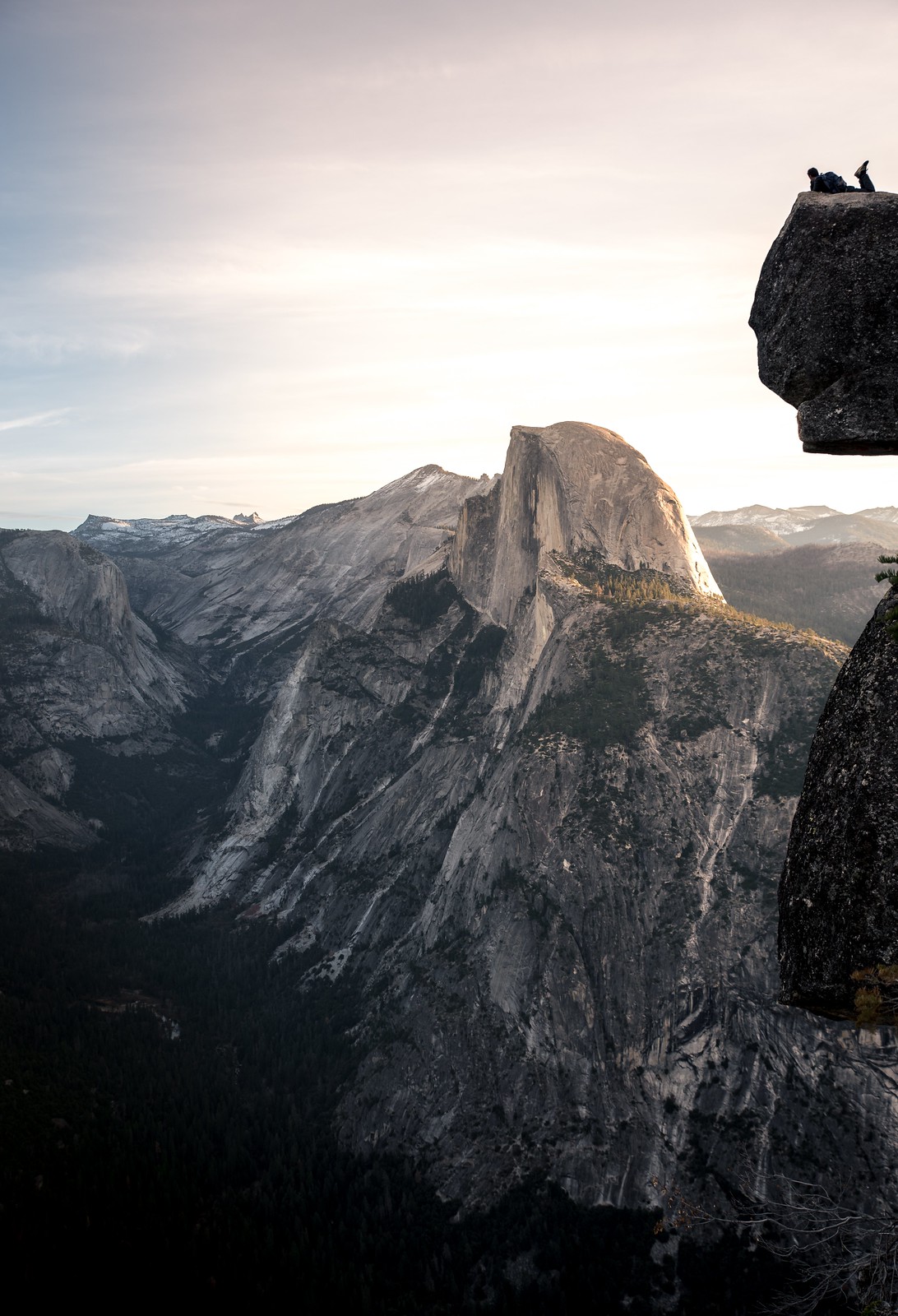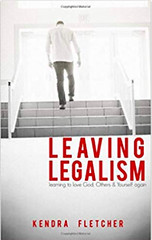Years ago, Kendra Fletcher and I met as homeschooling bloggers. We both wrote about our homeschools, our faith, and our out-sized families. And we both soon found ourselves distracted by the many promises that legalism makes. Somehow, if we homeschooled this way and parented that way and did church this way, we would find that God was really pleased with our good works and might love us better for it. Since then, we can both say we’re deeply grateful for God’s faithful work to undo our own attempts to earn His love and favor. And since then, Kendra has had a burning passion to see others freed from legalistic communities, bad religion, to find wholeness and faith in Christ alone. It’s a grace to welcome Kendra to the farm’s front post today…
Royal Robbins was a remarkable man. If you’re into rock climbing, you undoubtedly know who he was. He’s a legend in the world of climbers.
But for the rest of us, here’s what you need to know: Royal Robbins was the first person to scale the faces of the monstrous rock formations of Yosemite National Park, such as El Capitan and Half Dome. That second one is the instantly recognizable half-dome so famously photographed by Ansel Adams and a million park visitors since.
We live two hours from those famous rocks, and anytime a climber falls to his or her death, I gasp in disbelief and sorrow for them and their loved ones because it seems to me such a shocking way to die, plunging to your death from so many thousands of feet above the ground.
Any climber willing to make those ascents knows the dangers and possibilities before they set out to conquer the climb.
Royal was a good acquaintance of our family, and one evening he told us a story that occurred on a jutted ridge on the top of Half Dome.
If you do a photo search for that ridge, you’ll find pictures of it, usually with someone sitting with their legs dangling over the edge, hanging more than 4,737 feet above the valley floor.
Royal made the 400-foot ascent up the backside of Half Dome by way of cables one summer day, and there amongst the climbers enjoying the unparalleled views of Yosemite Valley, a small boy in a red baseball cap ventured out to that precipitous ledge and began to teeter.
His father turned to see the boy so close to a fatal fall, and rushed over, scooped him up, and carried him back to safety. From that moment on, for the rest of the time they were on the top of Half Dome, the little boy clung to his father. He never left his side.










Royal told us that witnessing the father saving his son was an illustration to him of the relationship a parent should have with their child — of trust and faith and security and loyalty.
In the child’s understanding of what he was saved from and his newfound love and gratitude for what his father had done for him, the child desired nothing more than to stay glued to the father, to listen to his voice, and to obey him all the way back down the descent of Half Dome.
How like God the father in Royal’s story is. And how much more we see our God protecting, loving, and stepping in to save us.
If we can’t see it in the moment, we can observe His hand in history.
Someday that little boy may doubt his father’s love or wonder where he’s been, but he’ll be able to remember back to the day on Half Dome when his father saved his life and know that the character of his father was to love, protect, and carry his son.
But for some of us leaving legalistic communities, it can be difficult to emerge from years of spiritual abuse at the hands of people who should have loved us like Christ.
It can be impossible to look back and see where God was at work in our lives then and even more confusing to see where He might be at work in our lives now.
The truthful answer for many of us to the question, “Where do you see God at work in your life?” is often, “I don’t.”
So what do we do?
We rest in His finished work. We begin to, as that little boy did, live as loved children of the living God.
The little boy knew by the swift action of his father that he was valued and loved by him, and he felt safe and secure in his identity as the loved-boy-of-his-father.
That’s the whole point of God. He loves us. He loves us. Say it to yourself, out loud: He loves me.Whisper it. Write it on your mirror. However you need to hear it, however often you need to be reminded, tell yourself this rock-solid truth: God loves me.
The God we put our hope in proclaimed as He hung on the cross carrying the wicked burden of all of our sin, “It is finished.” He bore our weight and all the risk when He stepped onto the precipitous ledge to save us from plunging to our deaths. He kept the law so that we don’t have to.
“For this reason the Father loves me, because I lay down my life that I may take it up again. No one takes it from me, but I lay it down of my own accord. I have authority to lay it down, and I have authority to take it up again. This charge I have received from my Father.” John 10:17-18
It wasn’t our sin that held Him there; it was His love. His love for the Father, His love for the world, His love for us. Simply because I am His child. You, too.
When we deeply and truly believe this, we can change our prayer from, “Help me do more and keep the law better so that you’ll forgive me and love me”, to, “Help me believe you more.” Help me love you more.
When we take God at His word and believe how loved we are by Him, everything else in our lives is transformed correspondingly.
Like the little boy on the precipitous edge, our response to God’s love for us is awe and gratitude, and that compels us to serve Him, follow Him, and love Him.
But our service, our following, and our love do not make Him love us any more than He already does.
Serving, following, and loving are by-products of what Jesus has already accomplished. He said, “It is finished.” There is nothing we add to that. Nothing.
Learning to live as loved and learning to love God resemble in their essence the whole seemingly celestial concept of abiding in Christ.
What does that even mean?
It means relationship. It is in the moments of that relationship and walking with and following that we learn to love and know God better, but there’s no one who can really impart to us how to do that, and the frustration of flying blind can be a deal-killer for those of us who are used to checklists and formulas. Just give me the list! Just tell me what I am supposed to do. I’d feel more productive.
Maybe you’ve been reading this whole post with that response, too. Maybe for you, the concept of abiding in Christ feels like a sickening freefall. That’s okay.
The thing about the love of God is that its depth and purity is so beyond our comprehension that it can be a lifelong process to get to a place where we understand that He loves us anyway.I’m going to venture that most of us may never get to the place where we understand even a small fraction of what God’s love for us truly means.
He loves us even if we never understand it, even if we never get to that place where we can freefall without feeling as if we’re going to throw up. Even then.
So really, it’s about surrendering to Him, too.
Surrendering our understanding of who He is.
Surrendering our listless attempts at pleasing Him.
Even surrendering to the work that he is doing in our hearts, in spite of our brokenness and lack of understanding of who He is.
For those of us who love to live according to our lists, the concept of surrendering seems nebulous and intangible.
Maybe this is the first step in a walk of faith that doesn’t rely on a man-made measuring stick?
Ask God to help you lay down your work and striving and attempts to please Him.
Ask God to help you learn to live as loved.
David G. Benner wrote, “Only God deserves absolute surrender because only God can offer absolutely dependable love.”
If for no other reason than this, surrender to God because He so dependably loves you.
Kendra Fletcher is a mother of 8, speaker, author, and podcaster. She is the author of Lost and Found: Losing Religion, Finding Grace, and Leaving Legalism, and she regularly writes for Key Life Ministries. The Fletchers reside in California, where they play in the Pacific Ocean as often as possible.
From a decade lived deeply in the chokehold of a legalistic community, Kendra Fletcher emerged to find healing, grace for herself, and a renewed faith that stood apart from the religious confines of her previous life in a rigid church community.
Are you there, too, finding yourself leaving a legalistic or cult-like church and wondering what it all meant? Gasping for breath, hoping to find peace, looking to find your way after years of spiritual abuse and religion-driven shame? If it’s your time to find freedom and healing, Leaving Legalism will serve as a guide to help you learn not only to separate religious behavior from true faith in Christ, but to emerge confident in the knowledge that you’re already loved and accepted far beyond your wildest dreams.
Kendra wrote Leaving Legalism, Learning to Love God, Others, and Yourself Again as a lantern to light the way back to true faith in Jesus, and away from the soul-crushing work of attempting to do it all in our own strength.








